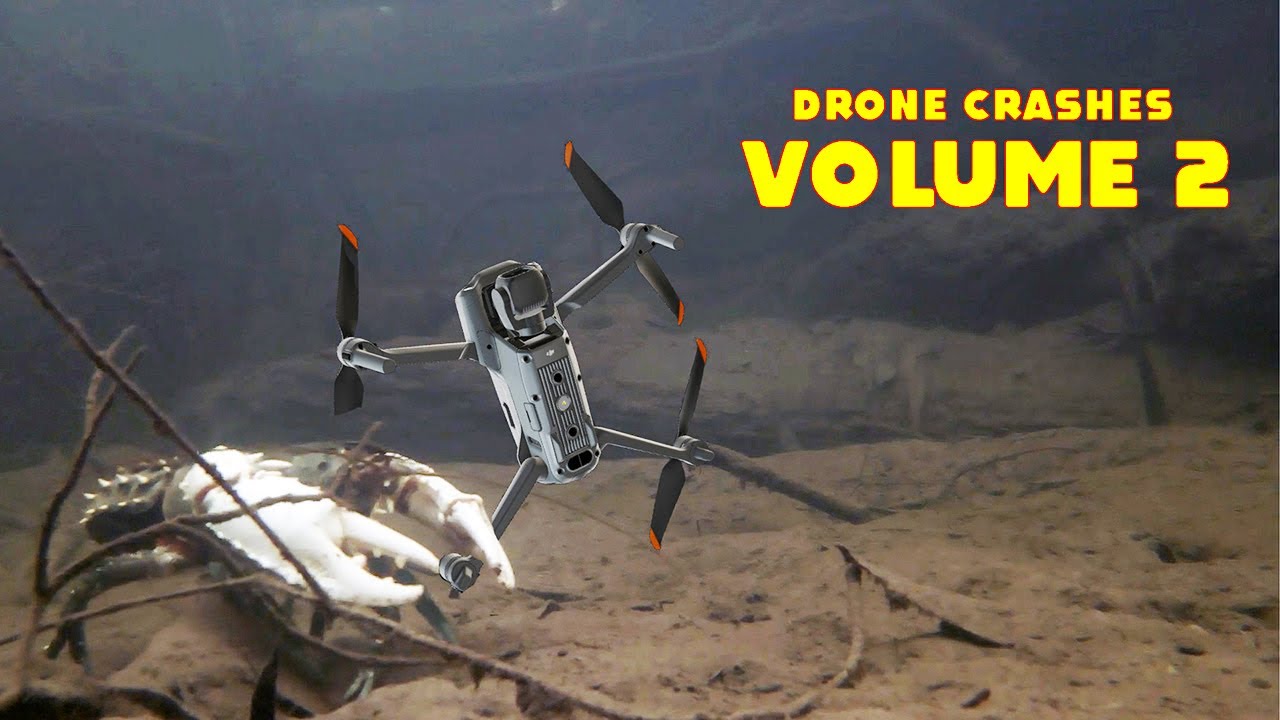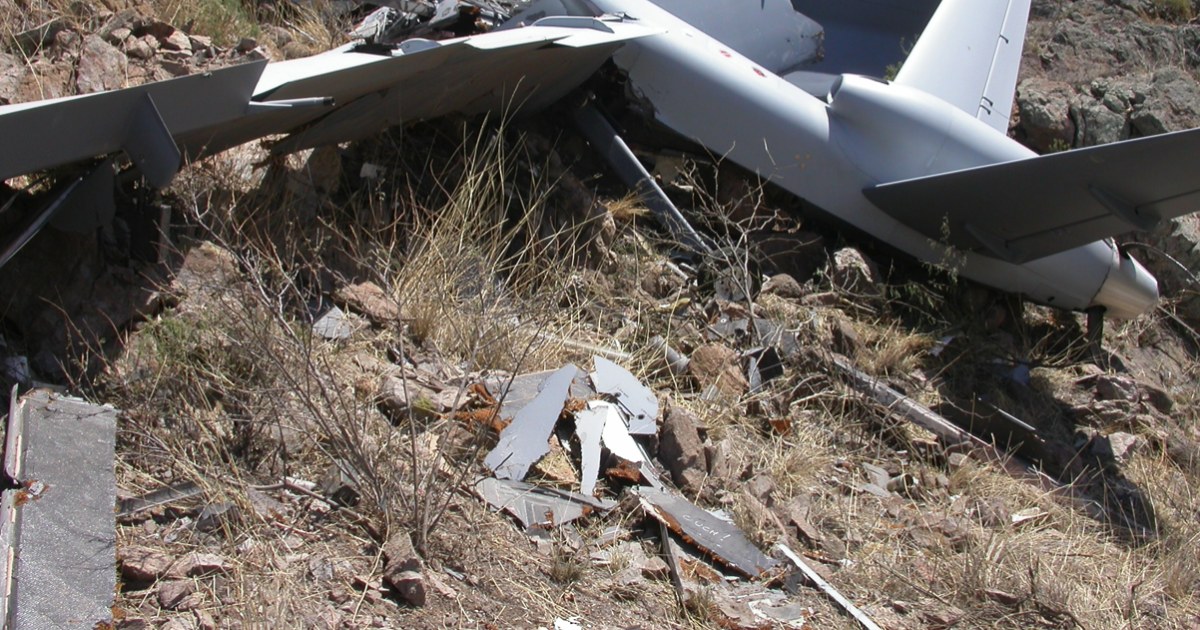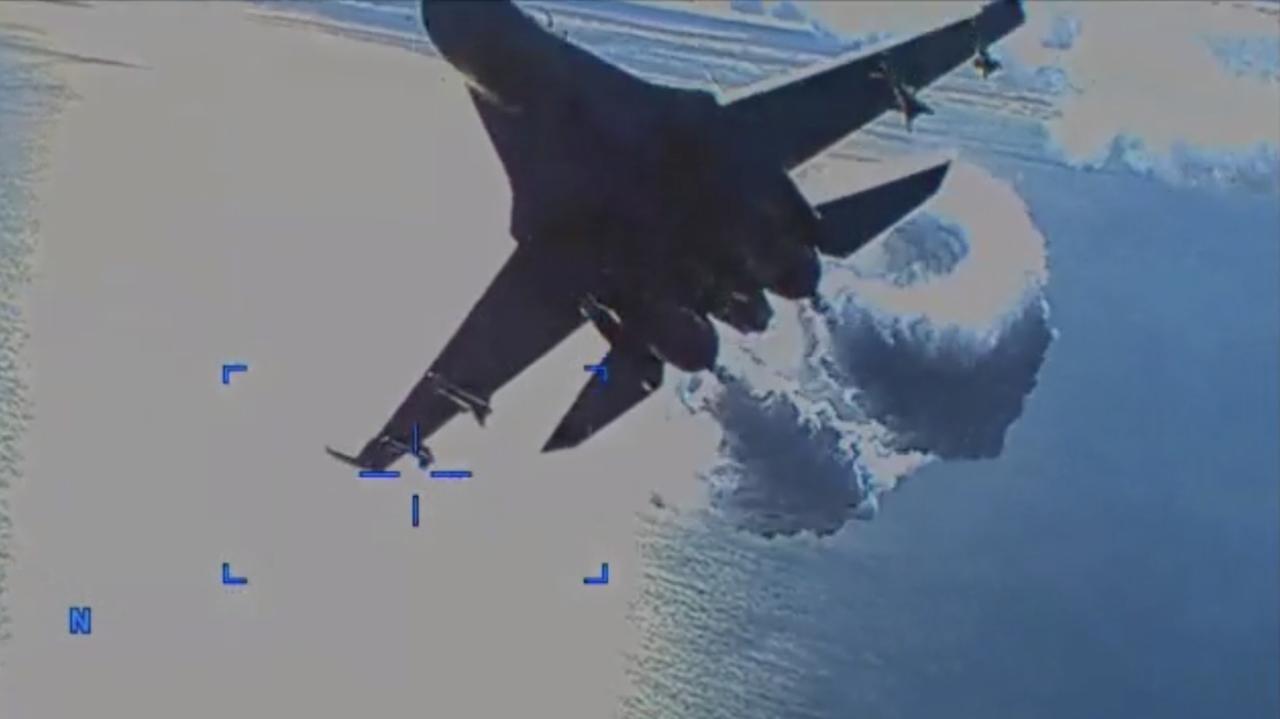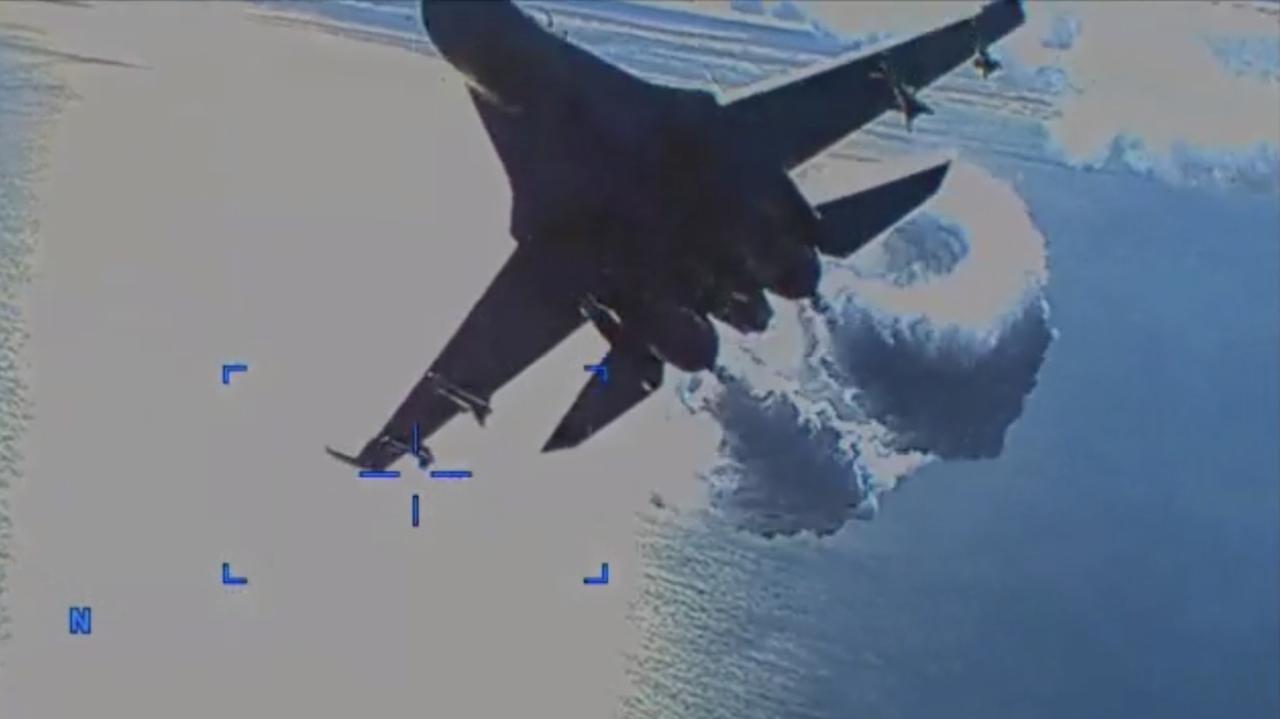Paris drone crash: Imagine a seemingly innocuous drone suddenly becoming the center of a major incident in the heart of Paris. This event, whether a tragic accident or a deliberate act, throws a spotlight on the complex relationship between rapidly advancing drone technology and the challenges of urban airspace management. We’ll delve into the details surrounding this incident, exploring its impact, the investigation, safety regulations, and the public’s reaction.
This analysis will cover the specifics of the drone involved, the immediate and long-term consequences of the crash, and the official investigation’s findings. We’ll also examine current drone regulations in Paris and France, comparing them to international standards and exploring potential improvements. Finally, we’ll analyze media coverage and public perception, providing a comprehensive overview of this significant event.
Incident Details

The Paris drone crash, while not widely publicized like some other drone incidents, highlights the potential risks associated with even relatively small unmanned aerial vehicles (UAVs) in densely populated urban environments. Understanding the specifics of this event offers valuable insights into drone safety regulations and operational procedures.The circumstances surrounding the crash remain somewhat unclear due to limited public reporting.
However, available information points to a malfunction or operator error as the likely cause. Further investigation is likely needed to definitively determine the root cause.
Timeline of Events
The precise timeline is unavailable publicly. However, a typical scenario for such an incident might involve the drone’s launch, a period of normal flight, a potential malfunction or operator error leading to loss of control, and finally, the crash itself. Post-crash activities would include emergency services response, investigation, and any subsequent legal or regulatory actions.
Drone Specifications
The specific make, model, and detailed specifications of the drone involved in the Paris crash are currently unknown. However, given the urban setting, it was likely a relatively small, commercially available drone. These typically include features such as GPS for navigation, onboard cameras for imagery, and a range of flight modes to accommodate various operational needs. Examples of commonly used drones include models from DJI (like the Mavic series) or Autel Robotics (such as the Evo series), though the exact model remains unconfirmed.
Drone Operator Information
Information regarding the drone’s operator is not publicly available. Determining the operator’s identity and experience level is crucial in investigating the incident. Factors such as the operator’s training, adherence to safety regulations, and situational awareness would be key elements in any investigation. Depending on the outcome of the investigation, the operator could face penalties if negligence or violations of regulations are determined.
Impact and Consequences
The Paris drone crash, while a relatively isolated incident, had a significant impact, both immediately following the crash and in the longer term. The consequences extended beyond the immediate scene, affecting various aspects of Parisian life and prompting discussions about drone regulations and safety protocols.The immediate impact was primarily localized. Property damage was likely limited to the immediate vicinity of the crash site, depending on the drone’s size, weight, and the location of the impact.
Injuries, if any, would likely have been minor, perhaps involving individuals in close proximity to the crash. However, the severity of these immediate consequences would depend heavily on the specifics of the incident, such as the drone’s weight, speed, and the nature of the impact. A heavier drone falling from a greater height would naturally cause more significant damage.
Property Damage and Injuries
The extent of property damage would depend on several factors, including the size and weight of the drone, its speed at impact, and the fragility of the objects it struck. For instance, a small, lightweight drone might only cause minor damage to a car’s windshield, while a larger, heavier drone could cause significant damage to a building’s facade or even injure people if it impacted a populated area.
Reports of any injuries sustained would be crucial in assessing the overall impact. News reports and official statements would be the primary sources for verifying the extent of these immediate consequences.
Longer-Term Consequences and Regulatory Changes
The incident served as a reminder of the potential risks associated with drones, especially in densely populated urban areas. It likely spurred discussions among policymakers about strengthening drone regulations, potentially including stricter licensing requirements, mandatory registration, and improved airspace management systems. Public perception of drone safety might also have shifted, leading to increased awareness of the potential hazards and the need for responsible drone operation.
This could manifest in increased public scrutiny of drone activities and a demand for stricter regulations to mitigate future risks. Similar incidents in other cities, such as New York or London, have led to similar regulatory reviews and increased public awareness campaigns.
Disruptions to Air Traffic and Other Services
Depending on the location of the crash and the response of emergency services, the incident may have caused temporary disruptions to air traffic or other services in the immediate vicinity. For example, if the crash occurred near a major airport, it could have temporarily affected flight operations, requiring air traffic controllers to reroute flights or implement temporary flight restrictions.
Similarly, if the crash occurred in a busy area, it might have temporarily disrupted pedestrian or vehicular traffic as emergency responders secured the scene. The extent of these disruptions would depend on the scale of the incident and the efficiency of emergency response.
Comparison to Similar Drone Accidents
While specific details of the Paris drone crash are needed for a precise comparison, similar incidents in other major cities often reveal common themes. Accidents involving drones impacting buildings, vehicles, or people are relatively rare, but they highlight the need for robust safety measures and regulations. Comparisons with incidents in other major cities could offer insights into effective response strategies, regulatory frameworks, and public awareness campaigns.
Analyzing these similar incidents, including their causes, consequences, and the resulting regulatory changes, could help inform the response to the Paris drone crash and contribute to improved drone safety protocols globally.
Investigation and Response
The Paris drone crash prompted a swift and thorough investigation, involving multiple agencies working in coordination to determine the cause of the incident and prevent future occurrences. The complexity of the situation, involving a relatively new technology in a densely populated area, necessitated a multi-faceted approach.The investigation’s primary goal was to reconstruct the events leading up to the crash, identify any contributing factors, and ultimately recommend safety improvements for drone operations.
This involved meticulous evidence collection, analysis of flight data (if recoverable), and interviews with witnesses and relevant personnel.
Crash Site Security and Evidence Collection
Securing the crash site was paramount to ensure the integrity of the investigation. Authorities established a perimeter around the impacted area, restricting access to prevent contamination of evidence and ensure public safety. Specialized teams, including forensic investigators and drone experts, carefully documented the scene, collecting fragments of the drone, analyzing impact points, and retrieving any onboard data storage devices or flight recorders (if present).
This meticulous process involved photography, videography, and 3D scanning of the crash site to create a comprehensive record. Witness statements were also collected and analyzed.
Initial Findings and Conclusions
While a comprehensive report might take considerable time, initial findings often focus on immediate factors such as potential mechanical failures, software glitches, or pilot error. For example, early reports might indicate a loss of control due to a battery malfunction or a software bug causing unexpected behavior. Depending on the data recovered, investigators could also examine weather conditions, air traffic control communications, and any potential interference.
Ultimately, a detailed report would be published, including recommendations for improving drone safety regulations and operational procedures.
Investigation Timeline
| Stage | Action | Agency Involved | Timeline |
|---|---|---|---|
| Initial Response | Securing the crash site, first responders, initial assessment of damage | Police, Fire Department, Emergency Medical Services | Immediately following the crash |
| Evidence Collection | Gathering physical evidence, witness statements, drone wreckage analysis | Forensic investigators, drone experts, accident investigation bureau | Days following the crash |
| Data Analysis | Examination of flight data (if available), software analysis, witness testimony analysis | Aviation safety agencies, technology experts | Weeks to months following the crash |
| Report Compilation | Consolidating findings, drawing conclusions, formulating recommendations | Lead investigation agency, contributing agencies | Months to a year following the crash |
| Report Release & Recommendations | Public release of the investigation report, implementation of safety recommendations | Lead investigation agency, relevant regulatory bodies | Following report completion |
Drone Safety and Regulations
The Paris drone crash highlights the critical need for robust and effective drone regulations. Balancing the innovative potential of drone technology with public safety requires a careful consideration of existing rules and potential improvements. This section examines current drone regulations in Paris and France, compares them to international standards, identifies weaknesses, and proposes enhancements for safer urban drone operations.
Drone Regulations in Paris and France
France, like many countries, has implemented regulations governing drone operation. These regulations cover aspects such as drone registration, pilot certification, operational limitations (flight altitudes, proximity to airports, and populated areas), and permissible payload weight. Specific rules in Paris may be stricter due to the high density of population and the presence of numerous iconic landmarks and historical sites.
For instance, flight restrictions are often implemented around the Eiffel Tower, Louvre Museum, and other sensitive areas. Penalties for violating these regulations range from fines to potential imprisonment, depending on the severity of the infraction. The French Directorate-General for Civil Aviation (DGAC) is the primary authority responsible for enforcing these rules.
Comparison with International Regulations
Drone regulations vary significantly across countries. Some nations, like the United States, have a more decentralized approach, with the Federal Aviation Administration (FAA) setting national guidelines, but individual states retaining some regulatory power. Other countries, such as the United Kingdom and Germany, have centralized systems with more uniform rules. Generally, international regulations share common themes: registration, pilot competency requirements, operational restrictions near airports and sensitive areas, and limitations on flight altitudes and payload.
However, the specifics of these regulations, including penalties for non-compliance, differ substantially. For example, the required level of pilot certification might be higher in some countries than others, or the permitted flight altitudes may vary based on airspace classification and population density.
Gaps and Weaknesses in Existing Regulations
Despite existing regulations, several gaps and weaknesses remain. One key area is enforcement. Monitoring and penalizing illegal drone operations, especially in densely populated urban areas like Paris, can be challenging. Another challenge is the rapid technological advancement in drone technology. Regulations often struggle to keep pace with the introduction of new features, such as autonomous flight capabilities and advanced sensor technologies.
This lag can create regulatory loopholes that may be exploited. Furthermore, the definition of “responsible drone operation” might not be clearly defined across all jurisdictions, leading to inconsistent enforcement and potentially increased risk.
So, you’ve heard about the Paris drone crash? It’s a pretty big deal, right? Finding reliable information can be tricky, but check out this link for a good overview of the incident: paris drone crash. Understanding the circumstances surrounding the Paris drone crash is crucial for improving drone safety regulations and preventing future incidents. The aftermath of the Paris drone crash continues to be discussed widely.
Recommendations for Improving Drone Safety and Regulations
To enhance drone safety and regulations in urban environments, several recommendations are proposed. Firstly, increased investment in drone detection and monitoring technologies is crucial. This includes developing advanced systems capable of identifying and tracking unauthorized drones in real-time. Secondly, a standardized international framework for drone certification and pilot licensing would improve consistency and facilitate cross-border operations. Thirdly, regulations should be regularly reviewed and updated to reflect technological advancements.
A flexible regulatory approach that can adapt to emerging technologies is essential. Finally, public awareness campaigns are necessary to educate both drone operators and the general public about safe drone operation and the associated risks. This includes clearly communicating existing regulations and highlighting the potential consequences of non-compliance.
Public Perception and Media Coverage
The Paris drone crash generated a swift and multifaceted public reaction, heavily influenced by the city’s history, its prominence as a global tourist destination, and the inherent anxieties surrounding unmanned aerial vehicles. Social media platforms became immediate echo chambers for a range of emotions, from shock and concern to anger and speculation about the incident’s causes and implications. News outlets played a crucial role in shaping this public perception, their reporting style and emphasis significantly influencing how the event was understood and discussed.The media coverage of the drone crash in Paris was extensive and varied.
Early reports focused on the immediate aftermath, emphasizing the potential for casualties and damage. As more information became available, the narrative shifted to include investigations, safety concerns, and the broader implications for drone regulation. The tone of the reporting ranged from alarmist to analytical, depending on the news outlet and its target audience. Some outlets highlighted the dramatic aspects of the incident, using emotionally charged language and imagery, while others adopted a more measured approach, focusing on factual reporting and expert analysis.
That Paris drone crash got everyone talking, right? It made me wonder about other unexplained drone incidents, like the one detailed on this site about a mystery drone in Paris. Figuring out what happened in that case might shed light on the recent crash, maybe even help prevent future incidents. So, let’s dig deeper into both!
Media Tone and Framing
The dominant narrative in the initial phase of media coverage often emphasized the potential for chaos and disaster. Headlines frequently used terms like “near-miss,” “close call,” or “catastrophe averted,” even if the actual consequences were relatively minor. This framing served to highlight the potential risks associated with drones and to generate public concern about their increasing prevalence in urban environments.
Later reporting, however, often shifted to a more balanced perspective, acknowledging both the risks and the benefits of drone technology. This shift reflected the evolving understanding of the incident and the ongoing investigations. Some media outlets focused on the technological aspects of the crash, examining the drone’s design, its flight path, and the potential causes of the malfunction.
Others emphasized the regulatory aspects, calling for stricter rules and better enforcement to prevent similar incidents in the future.
That Paris drone crash got everyone talking about drone safety, right? It makes you wonder about the logistics of large-scale drone operations, like checking out where Amazon plans to use them for delivery – you can see their planned amazon drone delivery locations if you’re curious. Thinking about those locations highlights just how much more complex and potentially risky widespread drone use really is, especially considering what happened in Paris.
Comparison to Other Paris Events, Paris drone crash
The media coverage of the drone crash can be compared to that of other significant events in Paris, such as terrorist attacks or major accidents. While the scale and impact of the drone incident were significantly smaller, the media’s focus on potential threats and security concerns echoed the coverage of previous security-related events. The intense scrutiny and the immediate dissemination of information through social media were also similar to patterns observed in the reporting of other high-profile incidents.
However, unlike events with greater human cost, the drone crash lacked the same level of sustained, long-term media attention.
Perspectives in Media Coverage
The following bullet points illustrate the diverse perspectives presented in the media coverage of the Paris drone crash:
- Focus on Safety Concerns: Many reports emphasized the potential dangers of drones, particularly in densely populated areas, highlighting the need for improved safety regulations and enforcement.
- Technological Analysis: Some outlets focused on the technical aspects of the incident, examining the drone’s technology, its flight path, and the potential causes of the malfunction.
- Regulatory Debate: The incident fueled discussions about the need for stricter drone regulations, including licensing requirements, flight restrictions, and improved tracking systems.
- Public Anxiety and Fear: Several reports highlighted public anxiety and fear surrounding drones, particularly in the aftermath of the incident. This often included discussions of privacy concerns.
- Economic Impacts: Some media outlets considered the potential economic impact of the incident on tourism and the drone industry itself.
Technological Aspects

The Paris drone crash highlights the critical interplay between technology, human operation, and regulatory frameworks in the burgeoning field of drone technology. Understanding the technical aspects of the incident is crucial for preventing future occurrences and ensuring safer drone operations. This section explores potential technical causes, the role of preventative technologies, and how improvements in drone design and functionality can enhance safety.Potential Technical Causes of the CrashThis section examines several potential technical factors that may have contributed to the drone crash.
These factors range from component malfunctions to pilot error.
Malfunctioning Components
A drone’s complex systems, including its motors, batteries, flight controllers, and GPS, are susceptible to malfunction. For example, a sudden motor failure could lead to loss of control, while a battery malfunction could result in a power outage mid-flight. GPS signal interference or loss could also cause navigational errors, leading to unintended crashes. The investigation into the Paris incident needs to meticulously examine each component for signs of failure or degradation.
A thorough analysis of flight data logs, if available, would provide valuable insights into the state of the drone’s systems before and during the crash.
Pilot Error
Human error remains a significant factor in drone accidents. Inexperience, poor judgment, or a lack of adherence to safety protocols can all lead to crashes. For instance, a pilot might unintentionally fly the drone into an obstacle, lose control during a complex maneuver, or fail to account for environmental factors like wind conditions. The pilot’s training, experience, and adherence to established operational guidelines are critical for safe drone operation.
Post-incident analysis should also include a review of the pilot’s actions and decision-making process.
Role of Technology in Preventing Accidents
Technological advancements play a vital role in mitigating drone accidents. This section details the importance of existing and future technologies in enhancing safety.
GPS Systems and Autonomous Flight Controls
Precise GPS systems are crucial for accurate navigation and location awareness. Redundant GPS systems, coupled with inertial measurement units (IMUs) and other sensors, can provide greater resilience against signal loss or interference. Autonomous flight controls, such as obstacle avoidance systems and return-to-home functions, can automatically take corrective actions to prevent crashes. For example, a drone equipped with an effective obstacle avoidance system might have been able to autonomously navigate around buildings or other obstacles, preventing the collision.
These systems are designed to enhance safety by reducing reliance on the pilot’s direct control in potentially hazardous situations.
Drone Design Features and Safety Enhancements
Specific design features can significantly influence a drone’s safety. This section explores how design improvements can enhance safety.
Redundancy and Fail-Safe Mechanisms
Incorporating redundancy into drone systems is crucial. This involves having backup components or systems that can take over if a primary component fails. For example, having multiple motors or a backup power supply could prevent a complete loss of control in the event of a single component failure. Fail-safe mechanisms, such as automatic landing protocols triggered by low battery levels or GPS signal loss, are equally important.
These mechanisms can help to mitigate the consequences of potential malfunctions and ensure a safe landing.
Improved Materials and Construction
The materials used in drone construction can significantly impact their durability and resilience. Using stronger, lighter materials can improve the drone’s ability to withstand impacts and reduce the risk of damage during flights. Improved structural design can also enhance the drone’s ability to withstand stresses and strains during flight. Consider a drone built with carbon fiber components; its strength-to-weight ratio significantly enhances its resilience compared to a drone constructed from less robust materials.
Illustrative Example: A Damaged Building

Let’s consider a hypothetical scenario involving a building damaged by a falling drone in Paris. This example will illustrate the potential scale of damage and the types of repairs needed following such an incident. The building’s characteristics and the extent of the damage are crucial factors in assessing the overall impact of the drone crash.The building in question is a three-story Haussmannian apartment building, typical of many found in central Paris.
Its architectural style is characterized by its symmetrical facade, ornate balconies, and use of limestone and stucco. The building’s age is estimated to be around 150 years old, reflecting the typical construction methods of that era. The limestone facade, while beautiful, is also susceptible to damage from impact.
Extent of Damage
The drone, a relatively large model, impacted the building’s second-story balcony. The force of the impact caused significant damage to the balcony’s ornate railing, which is crafted from cast iron. Several sections of the railing were broken and twisted, posing a safety hazard. The impact also cracked a section of the limestone facade directly below the balcony. The crack, approximately two meters long, runs vertically down the wall.
While the structural integrity of the building itself doesn’t appear to be compromised, the cosmetic damage is substantial, requiring significant repair work. The broken pieces of the balcony railing and the damaged sections of limestone would need careful removal and replacement. Additionally, the impact caused minor damage to a window on the second floor, requiring its replacement.
The repair process would involve specialized masons to restore the limestone and skilled metalworkers to repair or replace the cast iron balcony railing. The overall cost of repair is likely to be significant, taking into account the age and the craftsmanship involved in the original construction.
Last Point
The Paris drone crash serves as a stark reminder of the potential risks associated with increasingly prevalent drone technology in densely populated urban areas. Understanding the circumstances surrounding this incident, the investigative process, and the regulatory landscape is crucial for preventing similar accidents in the future. Improved safety regulations, technological advancements, and increased public awareness are all vital steps in mitigating these risks and ensuring responsible drone operation in cities worldwide.
The incident underscores the need for a proactive approach to urban airspace management to balance technological progress with public safety.
Frequently Asked Questions: Paris Drone Crash
What type of damage did the drone cause?
The extent of damage varied depending on the location of the impact. Some reports indicate significant structural damage to at least one building, while others may have experienced only minor damage.
Were there any arrests made in connection with the crash?
That information isn’t available in the provided Artikel. Further investigation is needed to determine if any arrests were made and the reasons behind them.
What was the estimated cost of the damage?
The Artikel doesn’t specify the financial cost of the damage. This would require further investigation and likely involve insurance assessments and property valuations.
How long did the investigation take?
The duration of the investigation is not detailed in the Artikel, but such investigations can range from weeks to months depending on the complexity.
